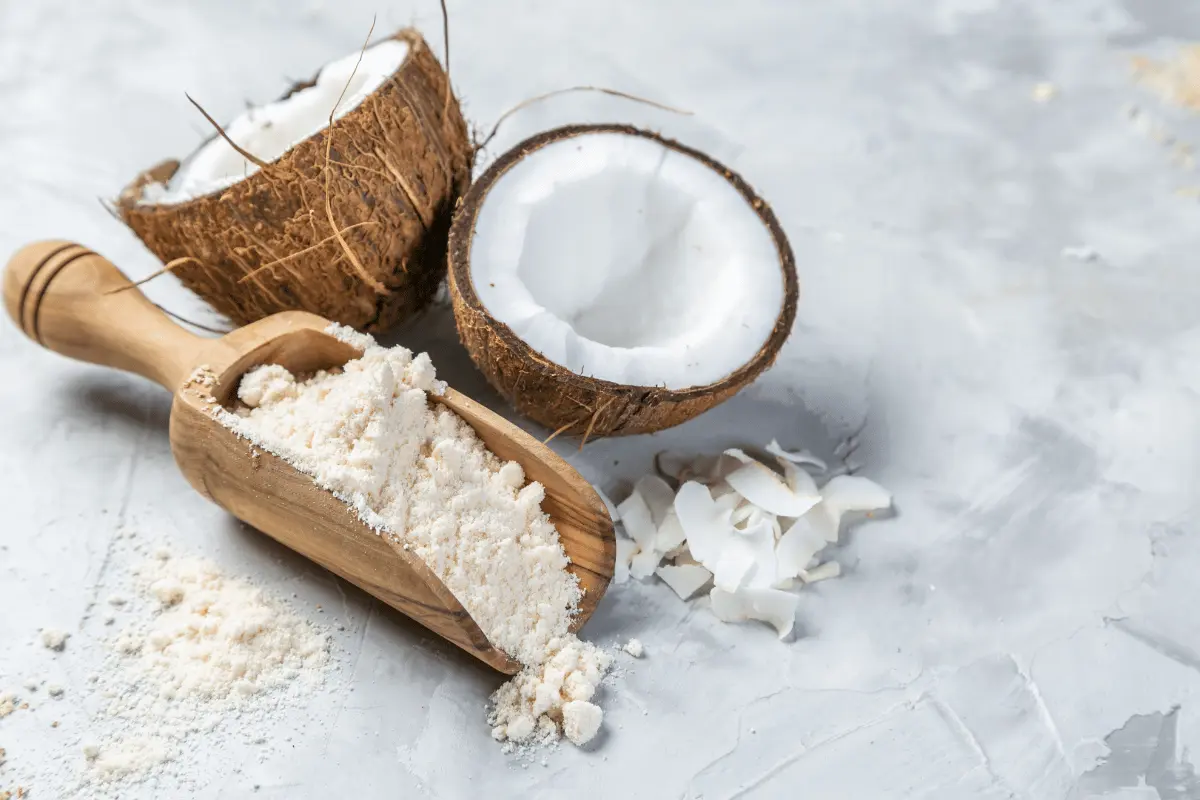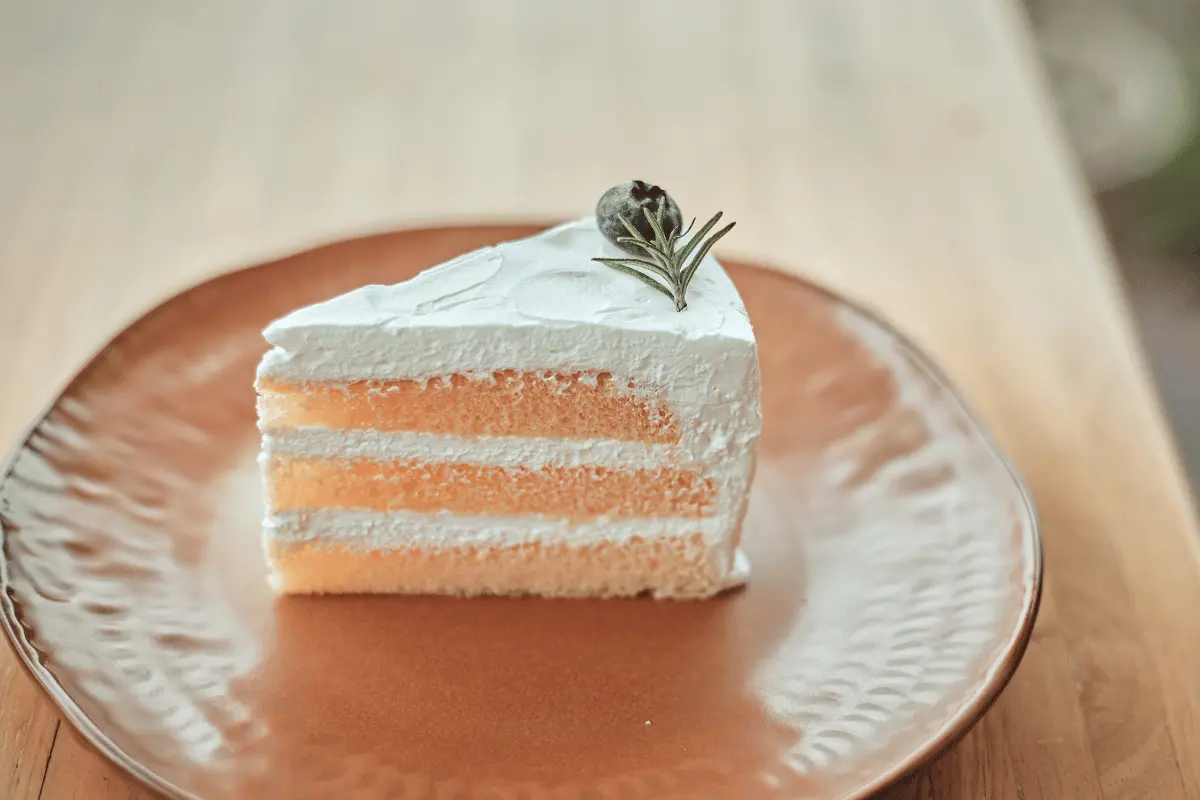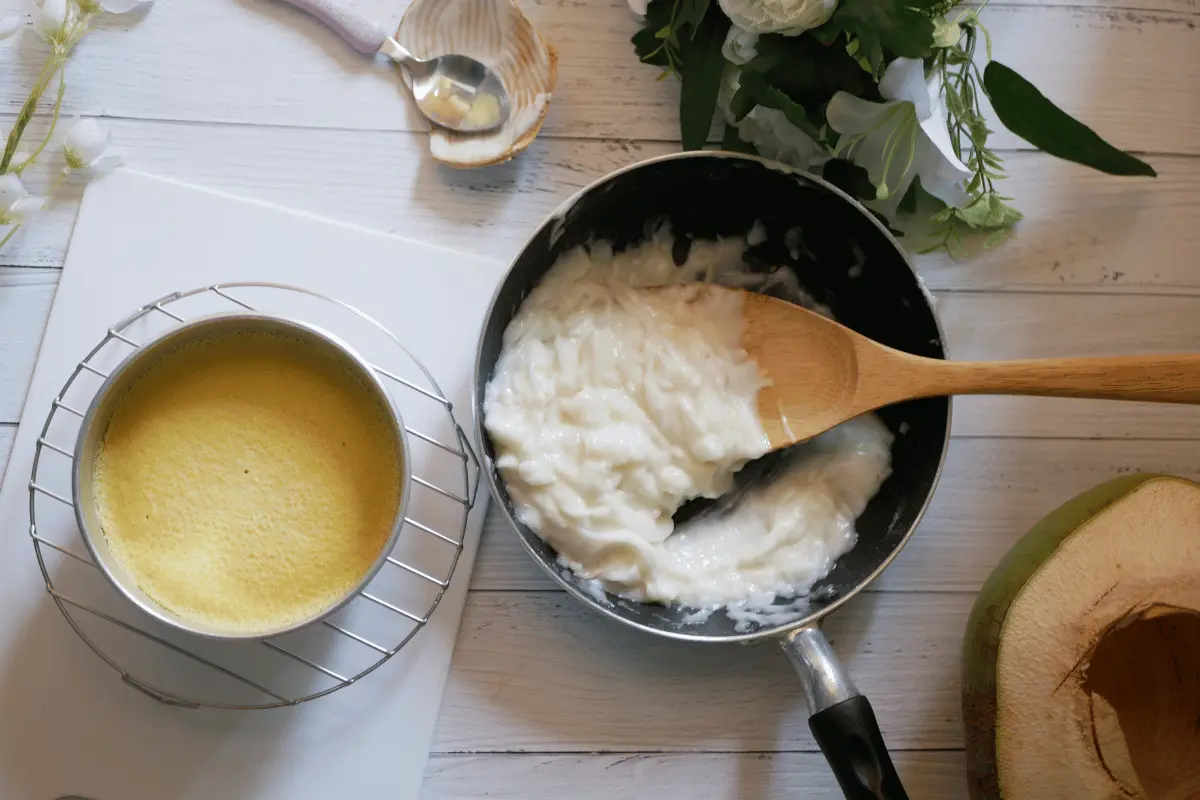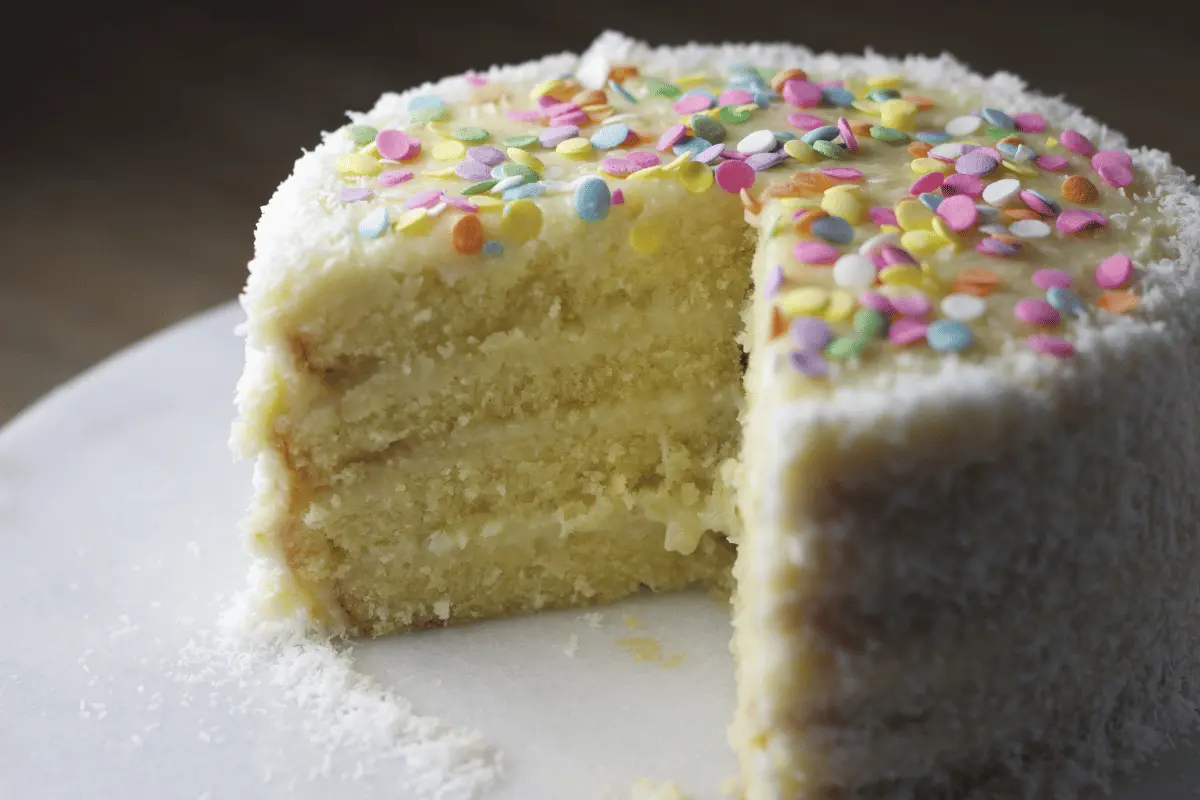Introduction
Coconut Cake Origins reveal a quintessential dessert that has captured the hearts and palates of people around the world. Its popularity stems from the perfect harmony of moist, fluffy cake layers with the rich, creamy texture of coconut frosting, often adorned with a generous sprinkling of shredded coconut that adds a delightful crunch. This dessert’s appeal lies not just in its taste but also in its versatility, making it a favored choice for a wide range of occasions, from festive celebrations to casual gatherings. The allure of coconut cake transcends cultural and geographical boundaries, showcasing the global love affair with this sweet, tropical-flavored treat.
The journey to discover the origins of coconut cake is as intriguing as the dessert itself, hinting at a history that spans oceans and centuries. While many associate its creamy, tropical flavors with island paradises or the sunny American South, the true birthplace of coconut cake may surprise you. Delving into the annals of culinary history reveals a tale of global trade, colonial exchanges, and the innovative spirit of bakers from a country far from the coconut’s native tropical habitats. This exploration into the origins of coconut cake uncovers a story that intertwines the fate of this dessert with historical trade routes and culinary evolution, offering a fascinating glimpse into its storied past and its journey to become a global favorite
History of Coconut Cake
The origins of coconut as an ingredient in baking can be traced back to the age of exploration and global trade, when European explorers first encountered the coconut palm in their travels to tropical regions. The coconut, with its hard shell, sweet water, and rich meat, quickly became a prized commodity, not just for its immediate nutritional value but also for its versatility. As coconuts were brought back to Europe and subsequently to other parts of the world, their use in cooking and baking began to evolve. Initially, coconut was used sparingly, often as a luxury ingredient in sweets and confections. It wasn’t long before the dried, shredded coconut we are familiar with today became a staple in the baker’s pantry, offering a taste of the tropics to those far from the coconut palm’s native shores.
The evolution of coconut cake recipes over time reflects a journey of culinary discovery and innovation. From the initial simple cakes that incorporated coconut as a novel ingredient, the recipes began to diversify, incorporating coconut in various forms—shredded, desiccated, milk, and cream. By the 19th century, coconut cake had begun to take on the form we recognize today, with layers of sponge cake filled and frosted with coconut-rich icing. The 20th century saw the advent of more elaborate versions, including the addition of pineapple, lime, and other tropical flavors that complemented the coconut. The evolution of coconut cake is a testament to the creativity of bakers and the enduring appeal of coconut, transforming from a rare exotic ingredient to a beloved staple of dessert cuisine around the world.

Cultural Significance of Coconut Cake
Coconut cake has carved its niche in the tapestry of culinary traditions, becoming a centerpiece at various traditional occasions and celebrations across cultures. In the United States, particularly in the South, coconut cake is a staple during the Easter season and Christmas, symbolizing joy and purity with its snowy white appearance. It’s also a popular choice for weddings and anniversaries, where its layers are seen as a metaphor for the depth and richness of the couple’s future life together. In some Caribbean cultures, coconut cake is part of the festive fare during holiday seasons, reflecting the abundance and sweetness of life. Similarly, in parts of Asia, where the coconut holds significant cultural value, coconut-based sweets and cakes are integral to celebrations, embodying wishes for prosperity and unity.
The symbolism of coconut cake varies widely among different cultures, reflecting the diverse meanings attributed to the coconut itself. In many cultures, the coconut symbolizes resilience and life, given its ability to thrive in sandy soils and produce fruit even in harsh conditions. Consequently, coconut cake often embodies these qualities, representing hope, resilience, and the sweetness of life amidst challenges. In some traditions, the coconut’s three eyes are seen as a symbol of the watchful eyes of ancestors, adding a layer of spiritual significance to the act of sharing coconut cake during gatherings. This rich symbolism, combined with the cake’s delicious flavor, makes coconut cake more than just a dessert; it’s a vessel for conveying deep cultural values and wishes for well-being, making it a cherished part of celebrations around the world.
Popular Variations of Coconut Cake
Coconut cake’s versatility has led to many delightful versions. The classic layered cake is a favorite, with its fluffy sponge and creamy frosting topped with shredded or toasted coconut. The coconut poke cake is another hit. It’s moist, with holes filled with coconut cream or milk for a rich taste. For big gatherings, the coconut sheet cake is ideal. It’s simple, with one layer and coconut frosting.
Regional variations of coconut cake reflect the local flavors and ingredients, adding a unique twist to the classic recipe. In the Southern United States, coconut cake is often a staple during holidays and celebrations, made with a traditional recipe that includes butter, sugar, and sometimes, the addition of pecans or walnuts for a Southern touch. In tropical regions, local versions might incorporate fresh coconut, pineapple, or mango, embracing the abundance of local fruit to enhance the flavor profile. Some Caribbean recipes include rum-infused cakes, adding a rich, aromatic flavor that complements the coconut. These regional variations not only showcase the adaptability of coconut cake to different tastes and ingredients but also highlight the global love for this versatile dessert, making it a cherished treat in various cultures around the world.

The Search for the Country of Origin
Common misconceptions about the origin of coconut cake often point towards tropical island nations or the Southern United States, largely due to the association of coconuts with tropical climates and the cake’s popularity in American Southern cuisine. However, the true roots of coconut cake are more complex and far-reaching than these assumptions suggest. The widespread belief that coconut cake originated in these regions overlooks the global history of the coconut itself and its integration into various culinary traditions long before it became a staple in American baking.
Historical evidence and expert insights debunk common myths about coconut cake’s origins. Arab traders and explorers introduced the coconut to Europe and the Middle East in the Middle Ages, well before it reached the Americas. European bakers, especially in Portugal and Spain, were pioneers in using coconut for their sweets, inspired by ingredients from their travels to the East Indies and the Caribbean. These initial coconut-based desserts set the stage for the modern coconut cake. Culinary historians reference 16th and 17th-century recipes that resemble early versions of coconut cake, indicating its European roots. This challenges the notion of its American or tropical origin, emphasizing the dessert’s extensive journey through different cultures and its role in the global culinary narrative.

The Verdict: Where is Coconut Cake From?
Based on the culmination of research and historical evidence, the origins of coconut cake can be traced back to Europe, specifically to countries like Portugal and Spain. These nations were among the first to incorporate coconut into their baking, following the introduction of the fruit to Europe via Arab traders and explorers. The early versions of coconut-infused desserts in these countries laid the foundation for what would evolve into the coconut cake. Recipe books from the 16th and 17th centuries in Europe document the use of coconut in sweets and cakes, indicating a long-standing tradition of baking with coconut that predates its popularity in other parts of the world.
exchange. European explorers and colonists introduced their culinary traditions, including coconut desserts, to the Americas, Africa, and Asia. In the Americas, especially in the Southern United States, coconut cake quickly became a favorite. Local tastes and ingredients shaped its recipe. The cake’s popularity in the South grew with the importation of coconuts from the Caribbean, which made this exotic ingredient more accessible. Meanwhile, local versions of the cake emerged worldwide, each incorporating regional flavors and ingredients. This global adoption and adaptation of coconut cake, from its European origins to international recognition, illustrate the dynamic nature of culinary traditions and their integration into diverse cultures.
Conclusion
Recap of key points about coconut cake and its cultural significance
The story of coconut cake is a rich tapestry woven from threads of exploration, trade, and culinary creativity. Its journey from the European tables of Portugal and Spain, where it began as an exotic confection made with the then-rare ingredient of coconut, to becoming a beloved dessert celebrated in various forms around the globe, is a testament to the dynamic nature of food traditions. This dessert transcends mere taste, embodying a history of cultural exchange and adaptation that reflects the interconnectedness of our world. The evolution of coconut cake, from its humble beginnings to its status as a global culinary icon, showcases not just the versatility of coconut as an ingredient but also the ingenuity of generations of bakers who have left their mark on this delectable treat.
As we reflect on the cultural significance of coconut cake, it’s clear that this dessert is more than just a sweet indulgence. It represents the blending of cultures, the sharing of traditions, and the celebration of community. Across different regions, coconut cake takes on various forms and meanings, from a symbol of hospitality and celebration to a cherished family recipe passed down through generations. Its presence at festive occasions and gatherings speaks to its role in fostering connections and creating memories.
Encouraging the manufacture of coconut cake from the country of origin
We urge readers to dive into a culinary journey by exploring coconut cake’s origins and trying to make it. Looking into its historical recipes lets you connect with the past and taste flavors loved by many. You can follow a traditional European recipe or try regional twists with local ingredients. Making coconut cake lets you join a long tradition of culinary discovery.
In the act of baking coconut cake, there is an invitation to reflect on the journey of this beloved dessert and to contribute to its ongoing story. Each variation, each adaptation, adds to the tapestry of its history, reminding us of the power of food to bring people together, to bridge cultures, and to enrich our lives. So, we invite you to roll up your sleeves, preheat your oven, and join in the celebration of coconut cake. Who knows? Your version might just become a new chapter in the delicious saga of this timeless treat.
Some recipes that can help you :
Best Coconut Flavor Pairings read more
Ultimate Coconut Cake Guide read more

